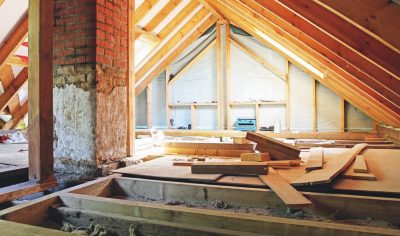- Oneflare /
- Cost Guides /
- Kit Homes

How much does it cost to build a Kit Home?
$70,000 - $250,000
How Much Does it Cost to Build a Kit Home?
When building a kit home in Australia, the price varies depending on the size of the building, the number of rooms included. Your total fee for a kit home can also differ if you choose to have your kit home delivered. The average price is $70,000 with all inclusions and is typically one-third the cost of a traditional home. Added extras can increase the cost, which includes laying slabs down and performing a soil test where the kit home will be placed.
Kit Home Costs in Australia
The cost for a kit home is equally influenced by the location of your home and the many factors (listed below). For example, a kit home in Melbourne can range from $100,000 to $220,000, while in Perth you can expect to pay about $145,000. If you were to add a bedroom to either the Melbourne or Perth kit home, the price will instantly change.
What is a Kit Home?
Kit homes are houses with prefabricated parts and are assembled at the property where it’s going to be placed once everything is delivered. The frames are typically constructed out of timber or steel to ensure they’re strong but durable. They’ve been made for several decades and have evolved into stylish, accommodating settings for residents.
Factors Impacting the Cost of a Kit Home
Just like the cost of building an entire home from scratch, there are many factors that can significantly impact the cost of your kit home. They can range from the number of bedrooms, the layout of your kit home and the delivery of your new home.
Type – The type of kit home built influences the cost. Kit homes total price is significantly determined by the number of floors of the house, as well as the number of bedrooms that are built. 2-bedroom kit homes prices are lower than four-bedroom kit home prices due to the difference in the square footage.
Material – The primary material used to construct the kit home influences the kit home cost because the builder will need to pay a specific amount for the material used. Metal home kits prices are typically higher than wooden house kit prices or timber house kits prices.
Size – The cost of kit homes is influenced size due to the number of materials and the hours of labour. For example, a three-bedroom kit homes prices are more than one-bedroom kit homes.
Site – The location where the kit home is assembled also affects its price tag. The manufacturer will determine the cost, depending on how far they’ll need to drive and transport all of the components. The consumer will also need to pay for soil tests, landscaping, and site surveying in advance to ensure the property is ready for the kit to be assembled on the grounds. It will cost more to build in conditions where snow is present or if the house is placed on a sloping surface.
What’s included in the kit home package – Most kit home packages include the materials, labour, and delivery for a flat rate. Additional expenses may also include sidewalks, garages or carports, driveways, utility hook-ups, and the foundation that the home is built on once it’s delivered.
Delivery – The cost of delivery is approximately $750 per 100km, depending on the company that manufactures the kit home and the location of where it needs to be assembled. The delivery cost may also be included in some packages depending on how much is spent. Nationwide flat rates are also available through most companies.
Council fees – State evaluations and plans are added to the cost of purchasing the kit home.
Labour costs – The labour and erection costs depend on site-specific conditions and the wind rating.
Price Estimates for Different Types of Kit Homes
Single storey – Single storey kit homes are the most affordable because fewer materials and labour are required to construct the building. They are typical $75,000 and more.
Double-storey – Double storey kit homes have a price range of $100,000 plus.
Country – Country kit homes prices can be an average of $30,000 to $70,000.
Custom – Custom homes cost an average of $80 to $150 per square metre and are more expensive because they have specific features that the customer requests. Custom kit homes may cost more but can meet the long-term needs and lifestyles of the residents.
Price Estimates for Different Kit Home Materials
The material of your kit home can drastically affect the total cost of your new home. Generally, timber frame kit homes are less expensive than steel homes as they are easier to construct and effectively build. You can expect a steel kit home to range from $100,000 to $200,000, while timber kit homes start from $60,000.
Price Estimates for Kit Homes Based on Bedrooms
The more bedrooms you would like, the more your kit home will cost. The average prices below include both the kit and floor cost, as well as labour costs.
| Number of Bedrooms | Average Kit Home Cost |
| 2 Bedroom | $75,000 – $150,000 |
| 3 Bedroom | 150,000 – $250,000 |
| 4 Bedroom | $200,000 + |
How to Hire a Kit Home Builder
How to Create an Accurate Estimate
- Make a list of your wants and needs
- Find a site to build the kit home
- Determine the type of material used for the kit home
- Consider the size of the home
- Obtain at least three quotes
Licencing and Qualifications
It’s essential to confirm that the builder is licensed to ensure that they’re qualified to construct the kit home. Request to see their license to ensure they can be trusted. You can also contact the state to look up their license before hiring them to build your new home.
When considering their qualifications, you may want to ask about the number of years they have in the industry. You can also request a few references to ensure you can speak to former customers. Reading reviews online can also allow you to determine if they can construct a solid kit home and if they have a good reputation in the industry.
How to Save Money Hiring a Kit Home Builder
You can save money on kit home prices by using a newer company that doesn’t have as many years of experience in the industry and is starting out. You can also ask for discounts or wait until specials are available, specifically on holidays throughout the year. Ordering your new kit home during the off-season will also mean getting a lower kit home price because of less demand. Additionally, choosing a smaller kit home with fewer features can also keep the cost low.
Frequently Asked Questions
How long does it take to complete a kit home?
Kit homes take an average of five to nine months to build a kit home, including the time it takes to assemble it at the delivery site. The size of the home is the main factor that determines the completion date.
What are the advantages of kit homes?
Many people choose to live in a kit home because building a kit home costs less and is more affordable. They can also be built in a shorter period of time rather than a stick-built home. They are also known to be energy-efficient, which means lower energy costs for the owner throughout the year for added savings on top of the low kit homes prices.
How long do kit homes last?
Kit homes last an average of 35 years if they’re maintained well in temperate climates. The materials used also determines their longevity. Steel kit homes prices are typically higher because they last longer than other materials used and are more structurally sound.
* The cost data is based on Oneflare and third-party sources


